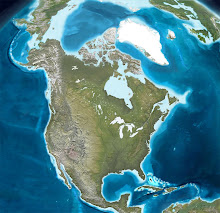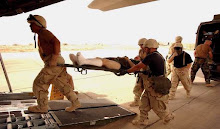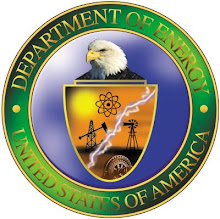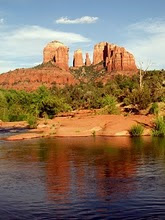By Steve Hammons
In 2016, a non-fiction book was published titled “The 37th Parallel: The Secret Truth Behind America's UFO Highway.” In the book, writer Ben Mezrich chronicled the explorations and investigations of former El Paso County, Colorado, (Colorado Springs region) reserve deputy sheriff Chuck Zukowski. The book was a New York Times bestseller for two months.
Zukowski has been featured in TV shows about UFOs and his theory about the 37th parallel (north). New Line Cinema (Warner Bros.) reportedly has a movie version concept based on Mezrich's book.
Mezrich looked at Zukowski’s speculation and theory that there is something about the region around the 37th parallel that seems to be a hot spot for UFO-related and unusual incidents. This includes the 36th parallel region to the south, and 38th to the north. (Each degree of latitude is approximately 69 miles wide.)
Because Mezrich is a well-known and prolific writer on a range of topics, the book received fairly widespread attention. Readers who might not normally focus on a UFO-related subject may have found Mezrich's research compelling.
There is also a unique location where the 37th parallel intersects with the Colorado Plateau and the Four Corners region. Both the plateau and the Four Corners span Colorado, New Mexico, Arizona and Utah.
GEOGRAPHY AND GEOLOGY
From west to east, the 37th parallel runs through central California, the southern tip of Nevada, then through the central U.S. where many states abut south-north at the joint state lines of the following:
- Arizona and Utah
- New Mexico and Colorado
- Texas panhandle and Oklahoma
- Texas panhandle and Colorado
- Texas panhandle and Kansas
- Oklahoma and Colorado
- Oklahoma and Kansas
- Arkansas and Missouri
- Tennessee and Kentucky
- North Carolina and Virginia
In the Four Corners, the Colorado Plateau is a distinct geological and ecological region of the U.S. It is an area of volcanic-related uplift of land in the shape of a rough circle in the Four Corners states.
Certain areas on the perimeter of the plateau are known for beautiful red rock mountains and cliffs – red due to high content of iron oxide. Sedona, Arizona, and St. George, Utah, are two such areas on the southwest and west edges of the Colorado Plateau, respectively.
Sedona is also famous for being an "uplifting" location (on the 34th parallel) not only for the natural beauty and climate, but also where unusual geomagnetic energies are allegedly emitted from the Earth and then return back to the ground, similar to fountains and vortexes. Some researchers theorize that the high iron oxide, high quartz content and unique underground volcanic structures might be part of these magnetic anomalies.
So, where do the 37th parallel, the Colorado Plateau and the Four Corners merge? It’s a beautiful area of the American Southwest where thousands of travelers visit every year.
The 37th parallel intersects the Four Corners and the boundary of the Colorado Plateau around Durango and Cortez, Colorado, near the Mesa Verde National Park, Canyons of the Ancients National Monument and the San Juan National Forest – all major tourist destinations.
The Continental Divide also runs north-south right through the same area. West of the divide, water flows into the Pacific Ocean. East the Continental Divide, water flows to the Atlantic. The divide stretches from Alaska to South America.
Are there any indications of unusual incidents in this region that might support Zukowski’s theories described in Mezrich’s book and on TV shows?
AZTEC AND FARMINGTON
There have been longstanding stories that a UFO crashed or crash landed near Aztec, NM, just south of Durango, in 1948. Authors Scott and Suzanne Ramsey conducted extensive research on this case for their 2015 book “The Aztec UFO Incident.”
According to some of the research, when this object crashed or made a controlled crash landing, several local people were witnesses. Government scientists and U.S. Army personnel reportedly may have flown into Durango, then proceeded by road south to Aztec.
Then, in 1950, 15 miles southwest of Aztec, the people of Farmington, NM, reportedly witnessed three days multiple UFOs flying over the town. This is known as the “Farmington armada” incident because there were “fleets” of objects observed.
The local newspaper interviewed many local citizens and documented their statements about what they observed. Other regional newspapers covered the incident at the time, too. Some witnesses said the objects sometimes were not just cruising along, but doing active maneuvers, swooping and darting around the skies above Farmington.
In more recent years, researchers like Zukowski and others have looked at various incidents in the Four Corners region. Some investigators and analysts say they see possible patterns, like Zukowski’s 37th parallel theories.
And for many people, UFOs remain a weird mystery, born of decades of movies and TV shows, and occasional news accounts of allegedly real incidents.
However, beginning in December 2017, news reports emerged about a special Pentagon research unit tasked with investigating and analyzing the situation – the Advanced Aerospace Threat Identification Program (AATIP). Concurrent with that news, the public learned about recent U.S. Navy jet pilot encounters with “unidentified aerial phenomena (UAP)” at sea near Navy aircraft carrier strike groups and near the west and east coasts of the U.S. Three videos taken from Navy jets were declassified and released.
This development made the UFO topic much more real and legitimate for many citizens, journalists and those involved in national security and public safety.
As the year 2020 rapidly approaches, maybe we will develop new insights and understanding about the UFO phenomena – in the Four Corners and elsewhere.
(Related articles “Storytelling affects human biology, beliefs, behavior” and “Reagan’s 1987 UN speech on ‘alien threat’ resonates now” are posted on the CultureReady blog, Defense Language and National Security Education Office, Office of the Undersecretary of Defense for Personnel and Readiness, U.S. Department of Defense.)
Tuesday, December 31, 2019
Theory about 37th parallel and UFOs sparked book, TV shows, film concept
Thursday, December 12, 2019
UFOs, odd phenomena reported on perimeter of Colorado Plateau
By Steve Hammons
In three areas on the edge of the Colorado Plateau, which spans the four states of the Four Corners region, UFOs and other unusual incidents have been reported over the years and decades.
Sedona, Arizona, is one well-known spot, world-famous for the awe-inspiring red rock landscape and towering red cliffs and formations. Located on the southwestern rim of the Colorado Plateau, Sedona is also known for reports of invisible energy fountains and vortexes.
Durango, Colorado, and nearby Aztec and Farmington, New Mexico, are located on the eastern border of the Colorado Plateau. According to some reports, a UFO crashed or made a controlled crash landing near Aztec in 1948.
In 1950, the people of Farmington reported a large number of UFOs over a period of three days. This was well-documented by eyewitnesses and newspaper reports and is known as the “Farmington armada” case.
And in the region of the town of Vernal in the Uinta Basin of northern Utah, at the northern or northwestern edge of the Colorado Plateau, a significant number of UFO incidents and multiple other anomalous phenomena have been documented in books and films.
EARTH ENERGIES
Many people have heard about the Four Corners region of the American Southwest – the area around the intersection of Arizona, Utah, Colorado and New Mexico.
Yet, fewer of us may be familiar with the Colorado Plateau, an anomalous uplift of land in a rough circle that underlies the Four Corners area and likewise spans the four states.
Volcanic activity underlying the plateau is believed to be responsible for the uplift. Other natural forces have come into play to reveal millions of years of rock layers in places like the Grand Canyon and the beautiful national parks of Utah.
In Sedona, 68 miles south of Flagstaff, some researchers have speculated about the magnetic anomalies that have been documented by the U.S. Geological Survey. The rock and soil are red due to high iron oxide content. Also, significant quantities of underground quartz in Sedona as well as unique volcanic-related formations have been looked at in connection with alleged geomagnetic energy fountains and vortexes.
The geology of other areas on the perimeter of the Colorado Plateau may have similar features. Some of the rock types, such as ancient volcanic igneous rock, and mineral composition, such as high iron and quartz content, reportedly could be common denominators in Sedona, Durango, Utah’s Uinta region and other areas on the perimeter of the plateau.
Could geological and geographic traits of the Colorado Plateau, particularly the perimeter of the plateau, be related in some way with UFOs and a number of other unusual phenomena?
What other information about the plateau might inform us further? According to the webpages of the “Celebrating the Colorado Plateau” exhibits at the Museum of Northern Arizona in Flagstaff, “The Colorado Plateau encompasses 130,000 square miles. Elevations range from about 1,200 feet to 12,365 feet. It is home to one million people, including ten Native American tribes and numerous rare species of plants and animals.”
The museum’s website asks and answers the question, “How old is the Colorado Plateau?” “There is no simple answer because while the rocks exposed here may be hundreds of millions or even thousands of millions of years old, the Plateau as a distinct landscape feature is much younger. The age of the Colorado Plateau as a discrete geographic province is estimated to be bracketed between 70 and 17 million years.”
At Northern Arizona University (NAU) in Flagstaff, the Colorado Plateau Research Station is a "diverse scientific unit" consisting of "state and federal employees focused on the ecology of the Colorado Plateau," according to the NAU website.
Also at NAU, the Colorado Plateau Cooperative Ecosystem Studies Unit and the Colorado Plateau Biodiversity Center strive to research, understand and document the diverse animal and plant life, geography, geology, climate, hydrology and complex natural dynamics of the plateau.
NATURE’S STORY
East of Sedona, the rugged terrain of the plateau's southern edge, known as the Mogollon Rim, includes huge escarpments that clearly define the perimeter of the Colorado Plateau.
That is the region where, in 1975, a forest-thinning crew working in Arizona’s Apache-Sitgreaves National Forests reportedly encountered a UFO. The crew’s foreman, Travis Walton, was allegedly taken aboard the UFO craft for several days. This story was the basis of the Hollywood movie “Fire in the Sky.”
Just south of the “transition zone” between the plateau’s southern boundary around Sedona and Arizona’s Sonoran Desert is metro Phoenix, site of the famous “Phoenix lights” incident of 1997. In that case, hundreds or thousands of residents spotted an unusual large craft over the city one evening.
Not far from the plateau’s perimeter on the southeast is Socorro, New Mexico, the location of a well-known 1964 UFO incident. A Socorro public safety peace officer reported direct observation of a landed craft and of its takeoff. This case was investigated by the U.S. Air Force’s Project Blue Book, based at Wright-Patterson Air Force Base in Dayton, southwest Ohio.
North of Socorro and also on the eastern border of the plateau south of Farmington, Aztec and Durango are the well-known Chaco Canyon ruins. These are the remains of elaborate complexes of stone buildings erected by the ancient people who eventually abandoned the site. About 57 miles west-northwest of Durango are more structures and cliff dwellings at Mesa Verde National Park and the Canyons of the Ancients National Monument.
In addition, the Continental Divide runs north-south through the Durango region. The Continental Divide extends from Alaska to South America. On the west side of the divide, water flows into the Pacific Ocean. On the east side, water flows to the Atlantic.
Southern Colorado's San Luis Valley abuts the east side of the Colorado Plateau east of the Durango area. The San Luis Valley and northern New Mexico across the state line have also been linked to UFO and other unusual occurances.
And at the northern perimeter of the plateau in the Uinta Basin of northern Utah, decades of highly-unusual phenomena and UFO incidents were examined in a multi-year research project and in an excellent 2005 non-fiction book by award-winning journalist George Knapp and biochemist Colm Kelleher, PhD.
In addition to geological and geographic factors, the plateau has a human history and contemporary human make-up that might also be worth exploring. The Museum of Northern Arizona website tells us, “The Colorado Plateau has been continuously inhabited by native people of the Americas for approximately 12,000 years.”
“The early people of the Plateau gathered wild plants and hunted game animals. Many took up farming maize, beans, and squash [the "three sisters"] several thousand years ago. Today, the native peoples of the Colorado Plateau include the Hopi, Navajo, Zuni, Hualapai, Havasupai, Ute, Apache, and Southern Paiute. Each tribe has a distinct history, culture, and language.”
In several of the cases of UFOs and anomalous phenomena on and around the Colorado Plateau, we do frequently seem to see Native American/American Indian connections and proximity with unusual incidents and phenomena.
Could the unique combinations of Earth, Nature and people of the plateau help us understand more about UFOs and other unconventional phenomena?
What stories does the Colorado Plateau have to tell us?
(Related articles “Storytelling affects human biology, beliefs, behavior” and “Reagan’s 1987 UN speech on ‘alien threat’ resonates now” are posted on the CultureReady blog, Defense Language and National Security Education Office, Office of the Undersecretary of Defense for Personnel and Readiness, U.S. Department of Defense.)



































































































































































































